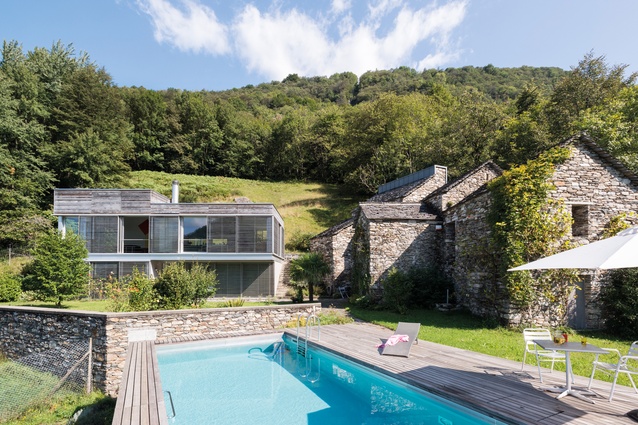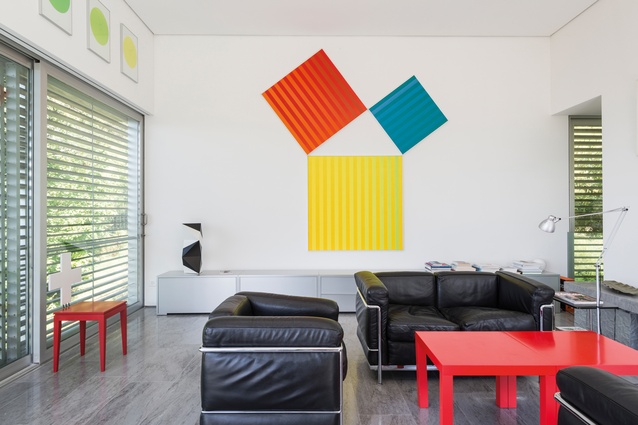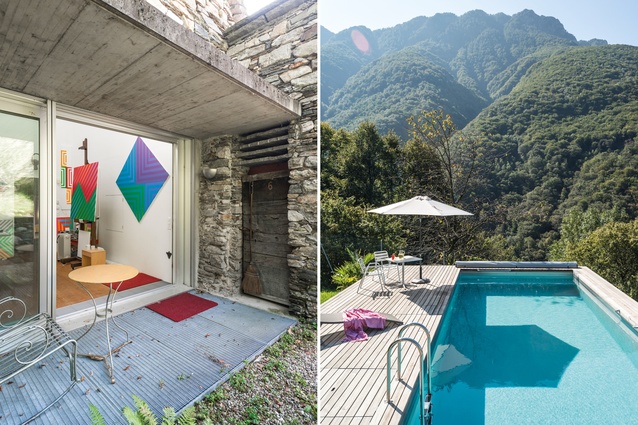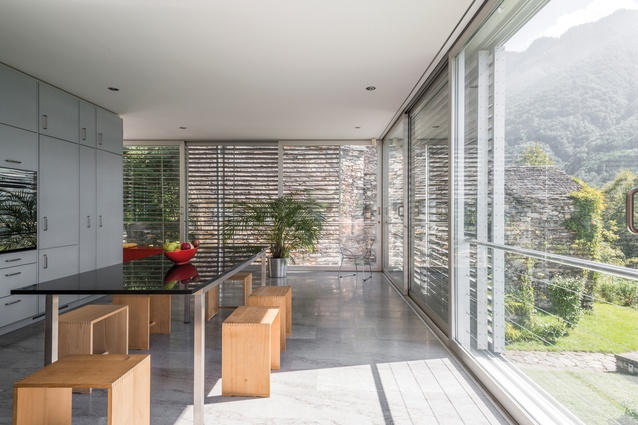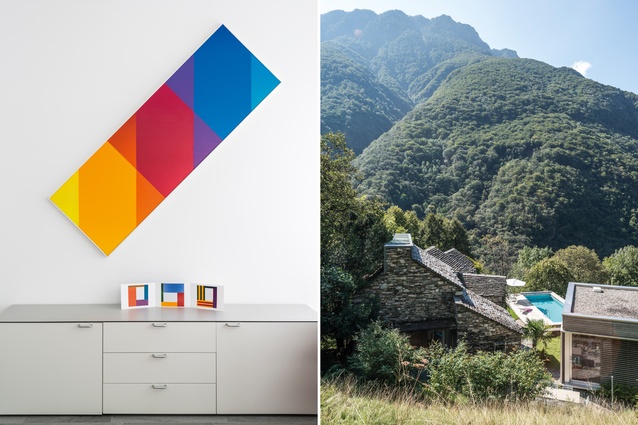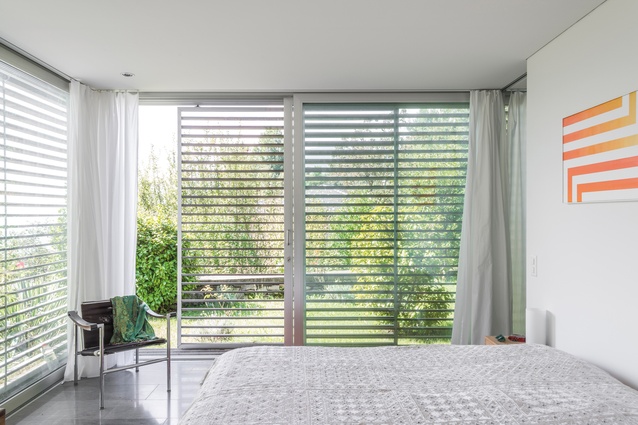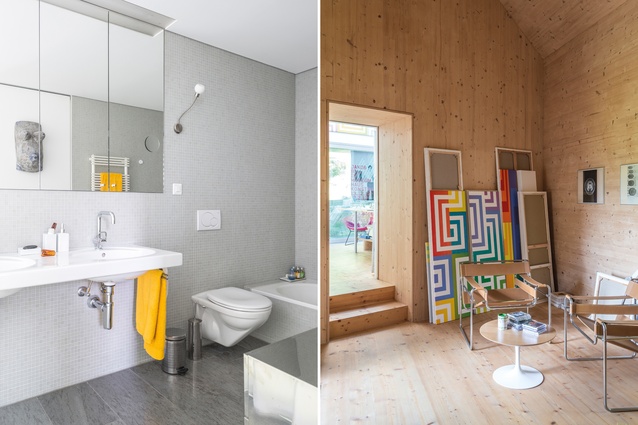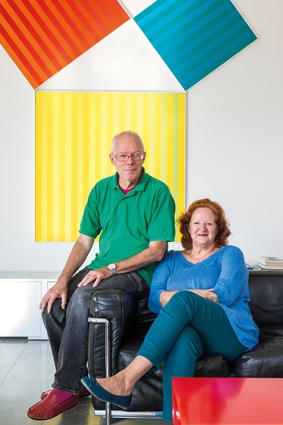Set in stone: Swiss farmstead
Three generations of Bauhaus-influenced artists grace this hillside home.
When Jakob Bill took early retirement from his job as an archaeologist at the age of 59, his main objective was “to have more time for painting”. It was then that he and his wife Chantal found the ideal spot for this activity: a farmstead with 15,000m2 of land, right above the village of Pianezzo in Switzerland.
The property consisted of a main house plus a group of dilapidated outbuildings that looked as though five small buildings had been pushed together in a random manner. “I did some archaeological excavations here and discovered buried cellars and sections of walls,” grins Jakob.
However, the Bills wanted clear structures in their home. With this in mind, they commissioned Ticino architect Michele Arnaboldi to take care of the planning. They had the old house demolished and a modern two-storeyed cube made of glass, concrete and wood put up in its place. Large windows on the first floor provide wonderful views of the valley.
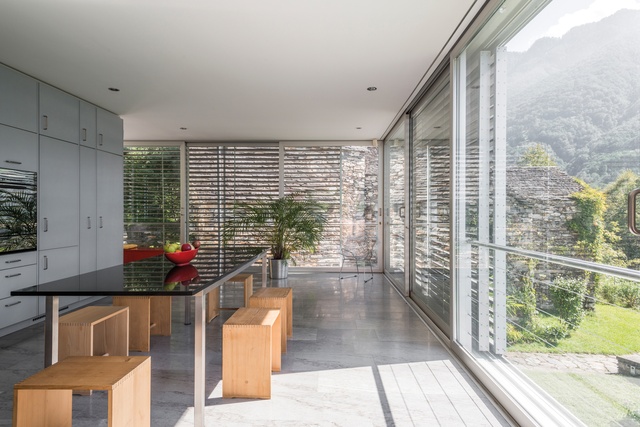
The rear section of the cube is situated almost right up against the rock and has next to no windows. “We need space for hanging up paintings,” comments Jakob. The reason for this soon becomes clear in the living room where three generations of artists are represented. Directly below the ceiling, there is a series of graphics by Max Bill (Jakob’s father) with circular colour studies; Max was not just an artist, he was also considered to be one of the most important designers of the 20th century. He studied at the Bauhaus and founded the Ulm School of Design in southern Germany, which continued and developed the Bauhaus’ approach to art, design and technology.
Max’s colour studies are contrasted by Jakob’s oil paintings. And, on the aluminium-coloured sideboard is a black-and-white sculpture by David – a sculptor and one of the couple’s three children. “Even when I was a little boy, I used to paint with my father’s leftover paints and I had my first exhibition at the age of 15,” recalls Jakob.
“I loved watching my father when he was working or being there when friends of his, such as the painter and sculptor Georges Vantongerloo, came to visit.” And when he was a child, Jakob also sat on his father’s design classics, such as the famous Ulm Stool. Needless to say, these, too, are an integral part of the furniture in the house in Ticino.
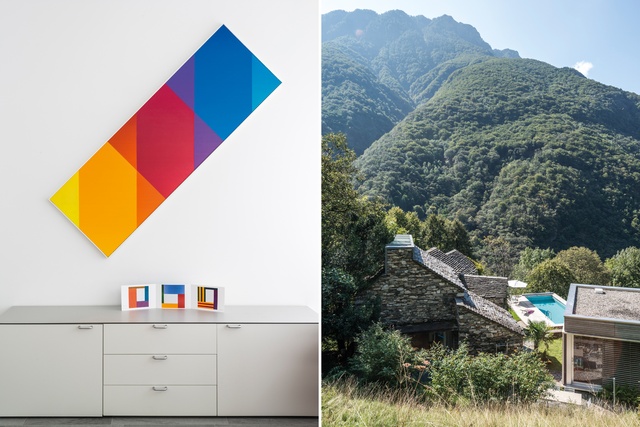
While he’s occupied with running the ‘Bill Foundation’ at his Lucerne home, in Ticino, Jakob is finally able to find the time, leisure and space for painting. He has set up his studio in one of the old outbuildings.
“The floors were so rotten that, after our first time in there, we went to a DIY store and bought ourselves safety helmets,” recalls Chantal, who has been at her husband’s side for 55 years. They had the outer walls restored and left them in place. Internally, the architect erected a second building made of wood with a clear layout and open gables.
A glazed wall and a row of windows in the ceiling allow the perfect amount of light into the studio. While his wife keeps the large garden full of roses, camellias, hibiscus and lavender in good shape, the painter loses himself in his studio.
This article first appeared in Urbis magazine.


